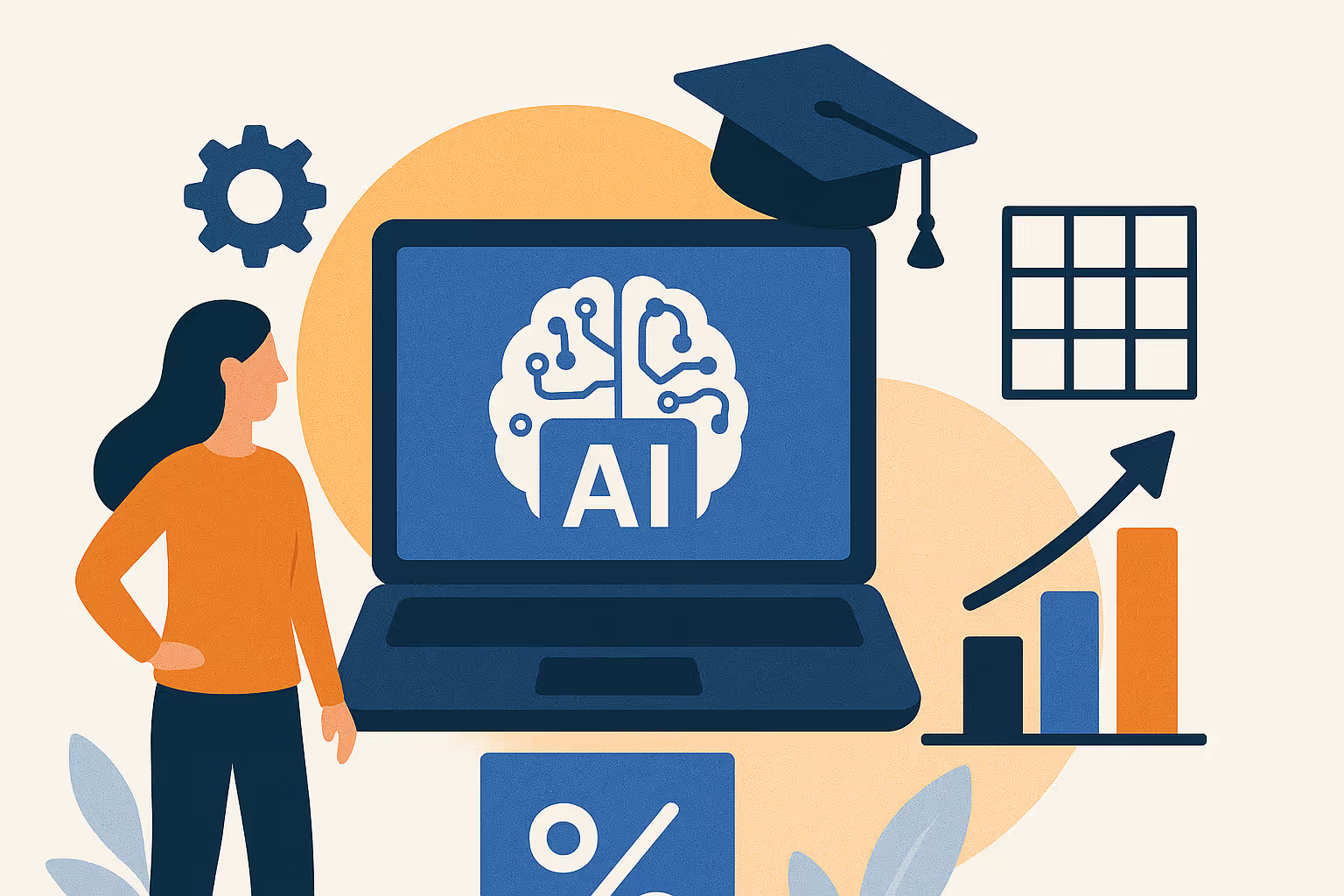About the Blog
Student retention is a top priority for higher education professionals, but identifying at-risk students early enough to make a difference can be a challenge. AI-powered tools, particularly machine learning, are transforming how institutions predict and prevent student attrition. But how effective are these tools, and how can enrollment teams use them in real-world scenarios?
In this post, we’ll break down how AI is being used in student retention, the practical ways you can apply it, and why platforms like Element451 are leading the charge in predictive analytics for higher ed.
How Machine Learning is Changing Student Support:
- AI-powered retention strategies help institutions identify at-risk students before they disengage.
- Machine learning models analyze behavioral and academic data to predict which students may struggle.
- Personalized interventions based on AI insights can significantly improve student success rates.
- AI tools like Element451 streamline retention efforts by automating outreach and engagement.
- Implementing AI in student retention doesn’t require advanced technical skills—just the right strategy and tools.
How AI is Changing Student Retention
Traditional student retention strategies often rely on reactive measures—intervening only after a student has already disengaged. AI, however, enables a proactive approach by continuously analyzing student behavior, engagement, and academic performance. Machine learning algorithms sift through vast amounts of data, identifying patterns that signal when a student may be at risk of dropping out. This means schools can step in with personalized support before a student reaches the point of no return.
AI can track attendance trends, LMS activity, and advising session participation to create a risk profile for each student. If an AI model detects that a student’s engagement has dropped significantly compared to their peers, an automated alert can be sent to advisors, prompting immediate outreach. By shifting from a one-size-fits-all approach to data-driven, individualized support, institutions can significantly improve retention rates.
AI isn’t replacing human advisors—it’s enhancing their ability to help students. Instead of spending hours sifting through spreadsheets, staff can focus on providing meaningful, personalized support based on AI-powered insights.
What Data Helps Predict Student Dropout Risk?
AI-powered retention models work by analyzing a mix of academic, behavioral, and personal data points. Some of the most impactful indicators include:
- Academic performance: A sudden drop in grades or missed assignments can signal disengagement.
- Class attendance and participation: Frequent absences or lack of LMS engagement often indicate a problem.
- Financial factors: Struggles with tuition payments can be a strong predictor of attrition.
- Advising and student support usage: If a student stops seeking academic help or attending advising sessions, they may be at risk.
- Social and extracurricular involvement: A lack of campus engagement can contribute to feelings of isolation, leading to withdrawal.
AI models like those found in Element451’s Bolt Insights integrate these data points to generate predictive scores, helping enrollment and student success teams prioritize their outreach efforts. This ensures that the right students receive support at the right time, improving both retention and student satisfaction.
How to Apply AI to Your Institution’s Retention Strategy
You don’t need a data science degree to leverage AI for student retention. Many modern platforms are designed to be user-friendly and intuitive, allowing enrollment and student success teams to harness the power of AI without deep technical expertise. Here’s how you can start:
- Use AI to Automate Early Alerts – Platforms like Element451 can automatically flag at-risk students based on behavioral patterns, making it easier for staff to take action before problems escalate.
- Personalize Student Communication – AI-driven insights allow institutions to send hyper-personalized emails, texts, or advisor check-ins based on a student’s unique challenges.
- Leverage Predictive Analytics for Resource Allocation – Instead of guessing which students need more support, AI helps teams prioritize interventions where they’ll have the biggest impact.
By integrating AI-driven retention strategies, institutions can increase student success, improve retention rates, and optimize staff efficiency—all without requiring major overhauls or additional hiring.
By leveraging machine learning, institutions can move beyond reactive strategies and start predicting which students need help before it’s too late. This shift not only improves retention rates but also enhances the overall student experience, ensuring that every learner gets the support they need to succeed.
The best part? You don’t need to be a data scientist to make AI work for your institution. With platforms like Element451, higher ed professionals can easily integrate AI-driven insights into their retention strategies—automating early alerts, personalizing outreach, and prioritizing interventions where they matter most.
FAQ
1. Does AI replace human advisors in student retention efforts?
No—AI enhances advisors' work by providing data-driven insights, allowing them to focus on personalized student support rather than manual data analysis.
2. How long does it take to see results from an AI-powered retention strategy?
Many institutions notice improvements in student engagement and retention within a semester, as AI quickly identifies at-risk students and streamlines intervention efforts.










